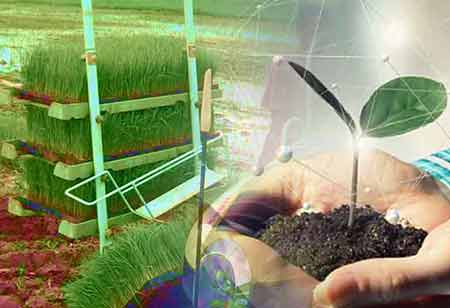Thank you for Subscribing to Agri Business Review Weekly Brief
Animal Agriculture And Livestock Farming Technology
Today, farmers face challenges from infrastructure to connectivity, rising demands for animal proteins to food spoilage and disease, and worry rising around animal health

By
Agri Business Review | Wednesday, July 20, 2022
Stay ahead of the industry with exclusive feature stories on the top companies, expert insights and the latest news delivered straight to your inbox. Subscribe today.
Livestock technology can improve or enhance the productivity capacity, welfare, or management of animals and livestock.
FREMONT, CA: Today, farmers face challenges from infrastructure to connectivity, rising demands for animal proteins to food spoilage and disease, and worry rising around animal health. Technology is disturbing all industries in our modern age, and AgTech is barred none.
The conventional livestock industry is a sector that is widely overlooked and under-serviced, though it is arguably the most vital. Livestock offers much-wanted renewable, natural resources that we depend on every day.
Digitalization of Livestock Management
The latest trends have shown that technology is revolutionizing the world of livestock management. New advancements in the past 8-10 years have considerably improved the industry, making tracking and managing livestock much easier and more data-driven. This technology can come from nutritional technologies, genetics, and digital technology.
Sensors are being cultivated to monitor real-time milk quality, health, and pregnancy hormones. Also, virtual fences can move animals wearing a sensor remotely from one pasture area to another.
Even robotics is advancing fast in this industry, where it’s addressing the challenges of labor shortages on traditional livestock farms. 12% of dairy farms are using robots, which is expected to grow to 20% in the next five years.
Check Out This : Cio Review APAC
Livestock Technology and the ‘Connected Cow’
Everything in the digital age is connected, comprising farming and agriculture. Livestock technology can improve or enhance the productivity capacity, welfare, or management of animals and livestock. For example, putting individual wearable sensors on cattle can keep track of daily activity and health-related issues while offering data-driven insights for the entire herd. All this data produced is also being revolved into meaningful, actionable insights where producers can look promptly and easily to make quick management decisions.
What is Animal Genomics?
Animal genomics can be defined as looking at the entire gene landscape of a living animal and how they interface mutually to influence the animal’s growth and development.
Genomics supports livestock producers in understanding the genetic risk of their herds and deciding the future profitability of their livestock. By being diplomatic with animal selection and breeding decisions, cattle genomics allows producers to optimize the profitability and yields of livestock herds.
Advantages of Livestock Technology.
Sensor and data technologies have immense benefits for the current livestock industry. It can upgrade the productivity and welfare of livestock by detecting sick animals and intelligently recognizing room for improvement. Computer vision allows us to have unbiased data that will summarize into meaningful, actionable insights. Data-driven decision-making leads to better, more efficient, and timely decisions that will advance the productivity of livestock herds.
Disadvantages of Livestock Technology.
There are some random consequences of this technology. For example, agriculture is often at the bottom of all charts for technology adoption in the digitalization of industries. In addition, the cyclical nature of economics in the livestock industry makes it hard for producers to justify the initial steep frank costs of implementing these technologies.
What is the future of Livestock Management?
Irrespective of all the present challenges, the future is bright for the connected cow.





